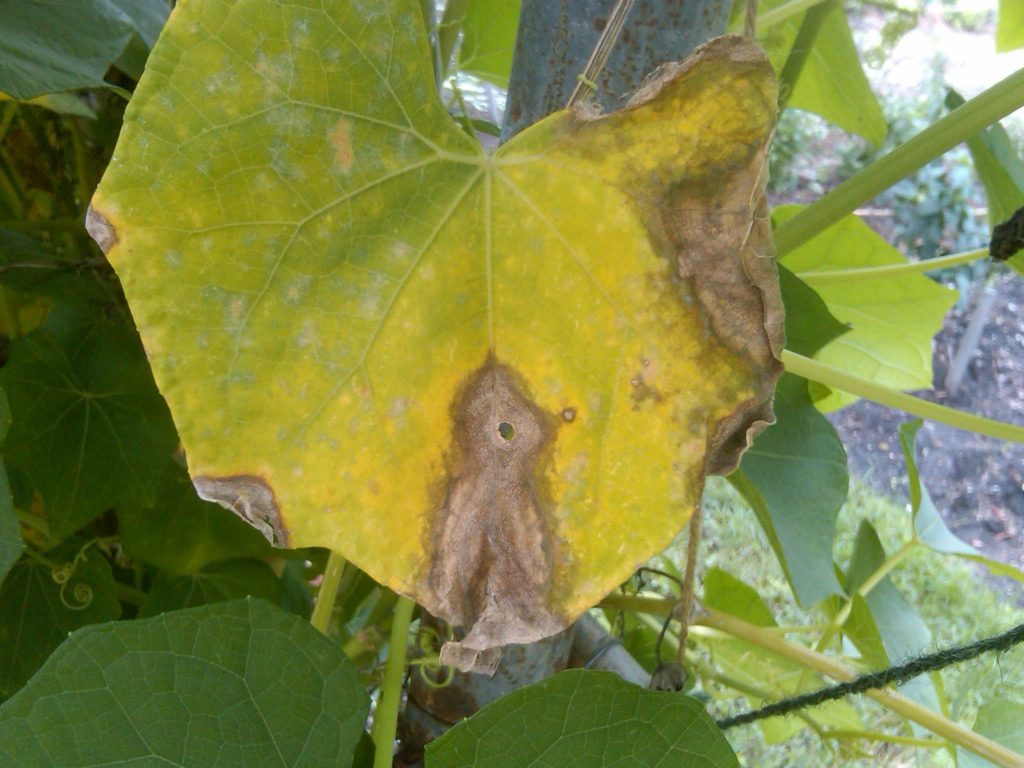by Lance Hill | Jul 12, 2022 | How To, Mirliton

Watering Mirlitons
I could have titled this “How To Water Your Mirliton” but that would be like asking, “How To Care for a Child.” There’s no single answer because each child is different and has different needs at different times in their life. Plants are the same. So this is a set of guidelines instead of rules for watering mirlitons during their three distinct stages in their life cycle.
It used to be said that mirlitons “take care of themselves” and need little care; the increase in hurricanes, floods, and intensive rain days means that is no longer true. Now they need intensive care. No watering technique can remedy a flawed plant site. Mirlitons need quickly draining, well-aerated soil. That means you may have to install drainage (ditches, French drains) in your ground planting; in raised beds, you need lateral exit routes for excess rain, such as side holes or subsurface corrugated pipe. Rapid and wide fluctuations in soil moisture content in your raised bed can stunt growth and hinder flowering and fruiting. These guidelines will generally apply to both planting methods.
Steps to take Before You ever Turn on the Hose:
Get a rain gauge. Place it next to your vine and check it daily. The weather person has no idea how much it rained in your yard—you need to know it for your vine’s health.
Don’t guess about the vine’s water needs. The soil and the leaves will tell you exactly what you need to know if you scout them daily. Learn to read the bamboo stake or soil sampler and the mirliton leaves. They will tell if the vine needs water, and too much water can create a sick vine.
Use a Bamboo Stake or Steel Soil Sampler to gauge soil Moisture: Learn how to use a ½-inch bamboo tomato stake to test soil moisture in the root zone. It will tell you instantly if your vine has too much or too little available moisture. There’s a link at the end of this article to how to read the stake. Or buy a stainless steel soil sampler that allows you see and feel moisture levels beneath the surface (link below)
Check Guttation Daily: Mirlitons will tell you every day if they are quenched or thirsty. Guttation is the droplets of water that form on mirliton leaf edges early in the morning. The presence of guttation means the vine has more than enough available water in the root zone. Three days without guttation mean it probably needs watering. Check the vine first thing in the morning for guttation. Learn to read your mirliton leaves at the link below.
Wilting Does not Mean Water the Vine. A daily wilt in hot weather is normal and healthy mirliton. It’s called “leaf flagging” and it reduces exposure to direct sunlight and toughens the leaves against plant diseases. Watering mirlitons as a reaction to temporary wilt can actually harm the plant. When you see a daytime wilt, wait until the evening and probably see that it recovers.
Never give your vine a shower. That’s a surefire way to start an anthracnose epidemic. The anthracnose pathogens are primarily carried primarily by water through splash-up from the soil or splashed from leaf to leaf. Water gently at ground level with a hose on low, or use drip irrigation.
The Three Stages in the Mirlton Life Cycle:
1. Toddler:
Be careful with the baby. The first impulse when we see a young plant droop is to water our way out of the problem. Don’t do it At the toddler stage, mirlitons are most sensitive to soil moisture issues because their young roots are just emerging. Overwatering is the leading cause of premature death in mirlitons. Prepare for your toddler by installing gentle drip irrigation or an olla. Use the stake and read the leaves daily.
2. Sprawler:
Once the vine is established, it will begin to climb and sprawl. A larger canopy means they need more water. Daily summer showers should provide enough water, but don’t guess–use the stake and read the leaves.
3. Fruiter
The fall is fruiting season and water needs may increase, but use the stake and read the leaves.
Final Thoughts
Watering is not something you simply do to a mirliton vine; it’s something you do with it. It’s a partnership in which both parties have something to say. Listen to your vine.
Bamboo stake instructions here.
Steel Soil Sampler here.
Read the Mirliton Leaves here.
by Lance Hill | Jul 12, 2022 | Mirliton

Debra Voelker (photo by Renee Lapeyrolerie)
By Renee Lapeyrolerie
Debra Voelker is Jazz Fest, Mardi Gras, costumes, and mirliton. She has roots on St. Ann Street and Ursulines Avenue. Her dad grew mirliton on Orleans Avenue and her maw maw stuffed them on Canal Street. About six years ago, Debra got mirliton seed from a friend who’d shared on a social media post that she’d put them ‘out for the taking’ from her front porch. The supplier said that she had gotten seed from an elder whose vine survived Hurricane Katrina’s winds, although we have not been able to verify the source nor the location.
However nice that would be to know, Debra’s vine has produced multiple years and she was even gifted a crop in the Summer of 2021. Surely, a Louisiana heirloom due to its reliable production and physical characteristics. Debra made a sweet mirliton pie and a soup with her bonus crop. It’s the Fall yield though that brings back memories of her mirliton-filled youth. Her maternal grandmother, or maw maw, who lived on Canal Street just two miles from where Debra now lives, stuffed her mirliton mixture back into the shells for baking, some with ground meat and others with shrimp. Debra makes a traditional stuffing and has added mozzarella, an idea she picked up from a friend. Her father’s sister used to cut mirliton up into big chunks and pickle them that way, after all, mirliton was plentiful in the family.
Debra’s dad grew a vine on the hurricane fence of the home she was raised in on Orleans Avenue near North Carrolton Avenue. She remembers the vine growing all along the fence and sometimes over the garage. She has vivid memories of accompanying him up the street to put bags of mirliton on the neighbors’ stoops. “There would be Schwegmann’s bags of them,” she said, “it was wild!” That is a common unit of measure among mirliton growers during the century-long era of a popular supermarket chain in the New Orleans region.
As we swapped stories about caring for our respective vines she lamented, “I don’t remember my dad doing a damn thing to his vine.” But she does remember a time that a mirliton tendril grabbed onto her hair. When Debra retrieved the mirliton from her friend, they were off-the-vine. She had to wait for them to sprout, she potted them, and got the vine going. For two years the vine produced fruit until a jealous dog interrupted progress in year three. She made another raised bed across the backyard and now both vines have produced and are thriving. Like most growers in the path of Hurricane Ida, her vine support was toppled, but she left it in place because she had fruit.
by Lance Hill | Jul 8, 2022 | Mirliton

Mirliton leaf infected with anthracnose. Unlike powdery mildew which yellows uniformly and wilts the leaves, anthracnose starts as yellow wedges between the leaf veins. It then turns the leaf tissue brown and leaves a distinctive “shot hole” in the middle of the brown patches. This is because the anthracnose fungus feeds on both living and dead tissue.
Seasons change and diseases change. For mirlitons (chayote), the cooler, drier spring is time for the airborne mildews (powdery and downy), but the hot rainy months July through August—bring anthracnose season. Being prepared for it can significantly reduce the damage the disease might do.
First, know the enemy. The above photo provides all the classic signs of anthracnose; a yellow wedge that turns into dead paper-like tissue, with a shot-hole in the middle. If you got these, you got anthracnose.
Anthracnose is a disease caused by the fungus Colletotrichum lagenarium in mirlitons. There are many fungi that cause anthracnose disease, but for our purposes, we’ll call Colletotrichum lagenarium the “anthracnose fungus.” Unlike mildews which are carried by air, the anthracnose fungus is waterborne. That means it is carried by water droplets, splashing up from the soil and then from leaf to leaf. That’s important because it means that while you might be able to wash off some fungi with a good shower from your hose, the same shower will splash anthracnose fungus all over your vine and cause a massive anthracnose infection.
Three Steps to Manage Anthracnose:
- Don’t give your vine showers. Water from at the bottom of the vine with a hose set on low or drip irrigation.
- Don’t drown the vine. Too much soil moisture stresses mirliton and makes it difficult for it to fight fungi. Make sure your raised beds and ground plantings have adequate drainage, if they don’t have it, then add it now.
- Don’t worry; Be Happy. As horrible as anthracnose looks, infected vines normally recover in September and flower and fruit. Plus, they acquire increased resistance to the disease.
Here’s a more complete fact sheet on anthracnose and how to protect your plant by prepping your planting site or raised bed::Here



Recent Comments